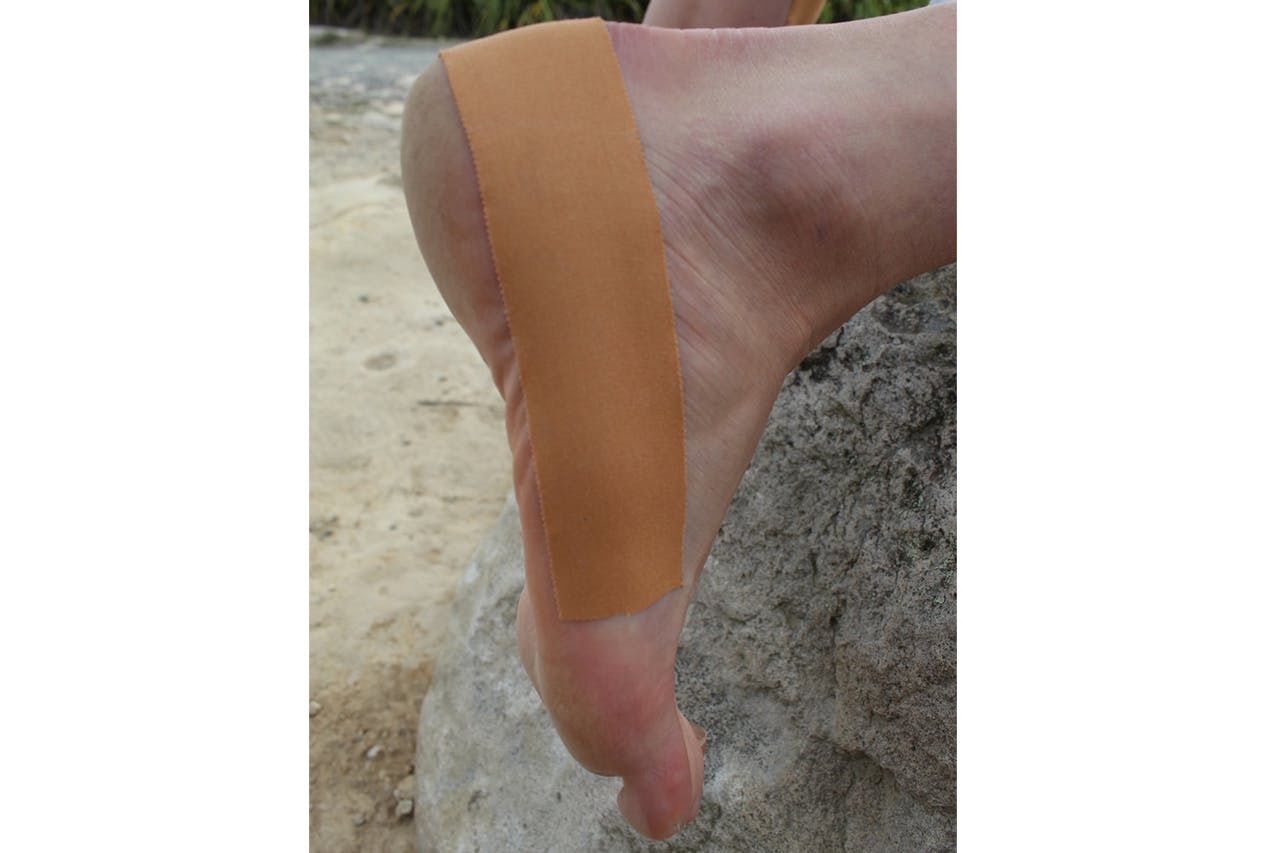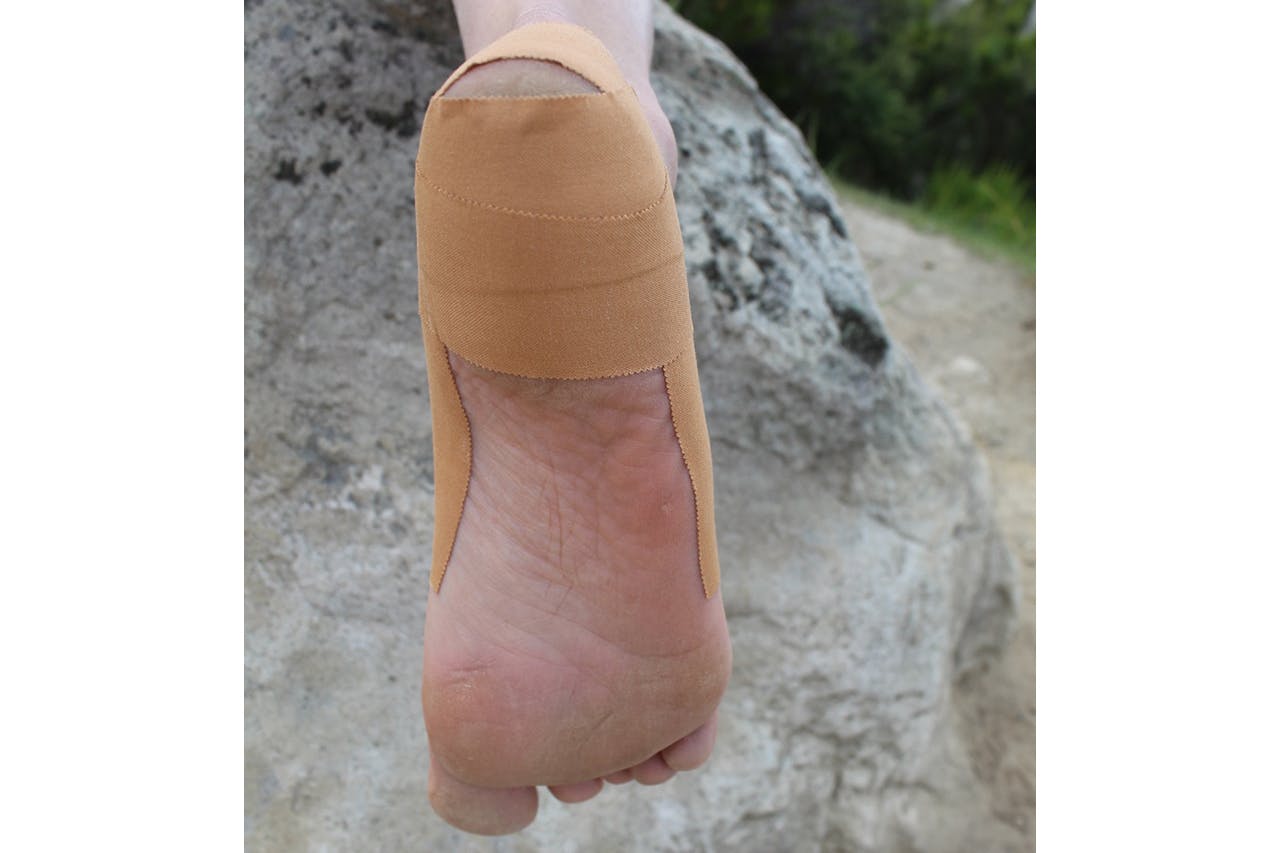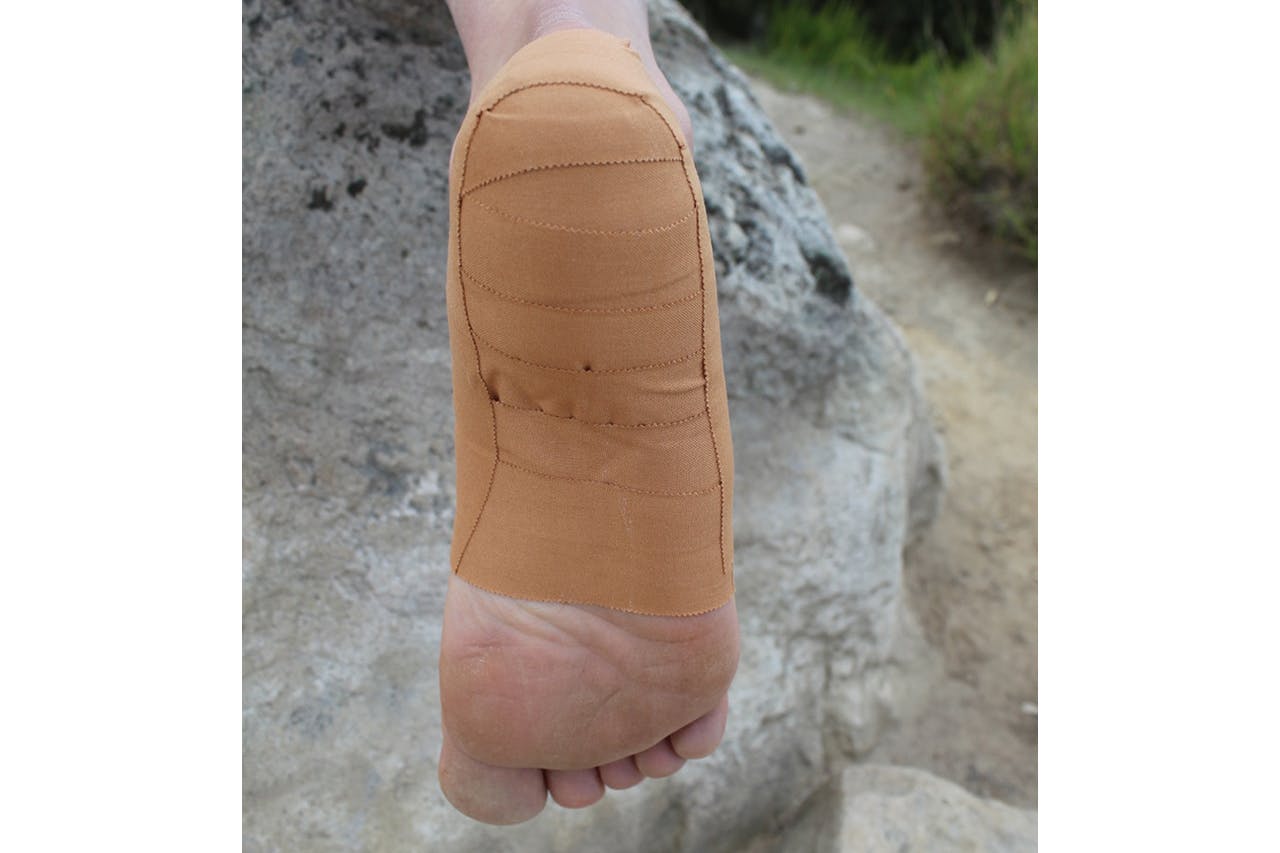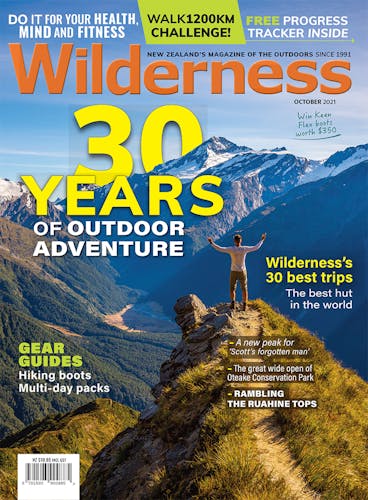Heel pain is a common ailment for trampers, especially after long days on the trail. Physio Samantha Sutton explains how to deal with it
Heel pain is common and one of the biggest culprits is inflammation in the plantar fascia, commonly called plantar fasciitis. It is most often triggered by ill-fitting footwear, stiffness in the foot joints, and weakness in the dextrous foot muscles
The plantar fascia is a thick band of connective tissue that runs underneath the foot, from heel to toe. This structure is vitally important and has a crucial biomechanical role in the function of the leg.
Here are just a few of the actions your plantar fascia does:
- Provides tension and support to the foot arch
- Enables the big toe to lift up (without this, walking would be near impossible).
- Maintains and corrects the midfoot joint position by stiffening.
- Provides overall support to ground reaction forces through the foot.
Short-term treatment
To deal with plantar fasciitis in the field and provide short term pain relief, you’ll need some strapping tape.

1. Dry the foot thoroughly, otherwise the tape won’t stick.
2. Start with a long piece of tape around the back of the foot. This acts as an anchor, allowing the rest of the tape to stick more effectively.

3. Apply a series of overlapping tape across the width of the foot and running from the heel to the middle of the foot.

4.Overlap the tape by 50 per cent each time you apply a new strip. Be sure to add a little bit of tension over your heel area, as this will off-load your plantar fascia.
5.You can apply another layer of anchor taping over the top. This will ensure the tape doesn’t peel off due to friction from your sock.
6. If you experience any tingling in the foot or toes, remove the tape as it may be applied too tightly.
Long term treatment
To fully resolve plantar fasciitis may require a biomechanical foot assessment and a combination of these treatments:
- Rolling the foot over a ball/frozen drink can
- Anti-inflammatories (oral or topical)
- Gel heel cup
- Stretching
- Strengthening
- Correct footwear






